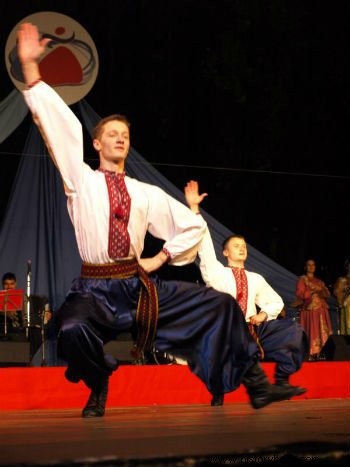The Slavs are a people originating in Russia and who spread across eastern Europe.
This denomination came from the Greeks and Romans who thought that they were all equal to each other.
Origin
The first human settlements in Russia – the region that would give rise to the Slavs – date back to the Neolithic.
The word “Slavic” comes from the Greek and means “slave”. Another version holds that it could be "he who comes from the East".
The first descriptions we have of the Slavs came from the Romans. They were described as barbarians and fierce warriors who looked like wolves. This observation is due to the fact that the Slavs had long hair and beards, while the Romans kept their hair cut and their faces almost always hairless.
The Romans called them “Slavs” to differentiate them from the peoples who came from the north.
Due to population pressure, some Slavic tribes begin to leave Russian territory and spread across the European continent. They occupied part of present-day Scandinavia and the Danube River was the gateway to Western Europe. They settled in what are now included countries such as Bulgaria, Poland, Hungary, Slovenia, Serbia, Macedonia and Croatia.
Culture
Among the Slavic culture we can highlight the traditional folk dances performed in pairs. Likewise, we have choreographies for men that include jumps and where the steps are performed with the dancer crouching. This would demonstrate strength and courage.
Also noteworthy are the richly sewn and ornate costumes that men and women wore at parties. The higher the social position, the more embellished clothing would be.

Russian dancer performs Cossack dance steps.
Slavic language
Slavs were incorporated into the Roman Empire by force or through federalization that guaranteed the Slavs Roman citizenship in exchange for military service.
However, as they were absorbed by Rome in its decadence phase, they did not undergo major changes in the spoken and written language. In this way, they did not adopt the Latin alphabet, but the Cyrillic as a form of writing.
Composed of 44 letters, the Cyrillic alphabet would have been invented by Saint Cyril and Saint Methodius, in the 9th century when they were catechizing the Bulgarians. With the expansion of the First Bulgarian Empire, the Cyrillic alphabet was adopted by other Slavic peoples such as the Slovenes, Serbs and Macedonians.
Also through Byzantine, Russian and Ukrainian Christian missionaries adopted the Cyrillic alphabet for their language. In the 18th century, during the reforms introduced in Russia by Peter the Great, the Russian Cyrillic alphabet was simplified.
Read more about the Byzantine Empire.
Religion
Like all tribal societies, the Slavs were polytheistic and their gods were used to explain natural phenomena, give cohesion and hierarchy to society.
Among the pantheon of Slavic gods we can highlight three main gods:
Svarog – is the creator god, the blacksmith who forged this world. It symbolizes the sun, justice and life itself.
Candles – sometimes represented sometimes as a man, sometimes as a woman. She is the deity of nature, of waters, of agriculture, of birth.
Striborg - the wind is its main element. He is the god of death, who carries souls to the Triglav. He was not, as it turns out in other mythologies, an evil god.
It is important to note that Triglav is a mountain with three peaks that are identified as the three heads of these gods. Located in Slovenia, it is over 2,800 meters high.
Each of these gods had a dragon, which had three heads in certain cases, helped them in their tasks.
As the Slavs incorporated into the Roman Empire, they adopted or were converted to Christianity. Later, the Slavs, who belonged to the Eastern Roman Empire, became Orthodox Christians, a religion that prevails in Eastern Europe to this day.
Slavs in Brazil
The most present Slavic people in Brazil are the Poles. It is believed that around 60,000 Polish immigrants came to the country fleeing the endless wars that raged in Poland.
Most settled in the countryside where they devoted themselves to agriculture.
Slavic Countries
- Russia,
- Belarus,
- Ukraine,
- Poland,
- Czech Republic,
- Slovakia,
- Lusatia,
- Bulgaria,
- Croatia,
- Macedonia,
- Serbia,
- Bosnia and Herzegovina,
- Kosovo,
- Slovenia.
Read more:
- Balkan Peninsula
- Barbarian Peoples
